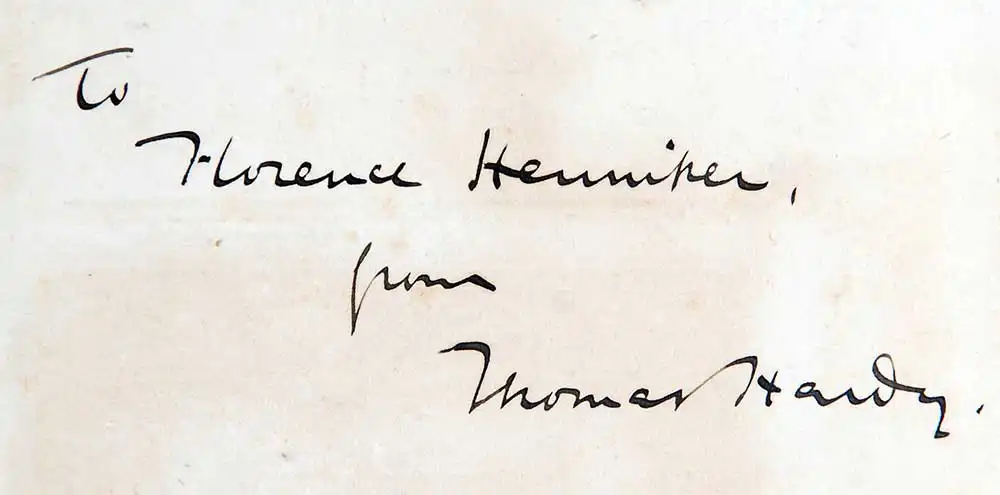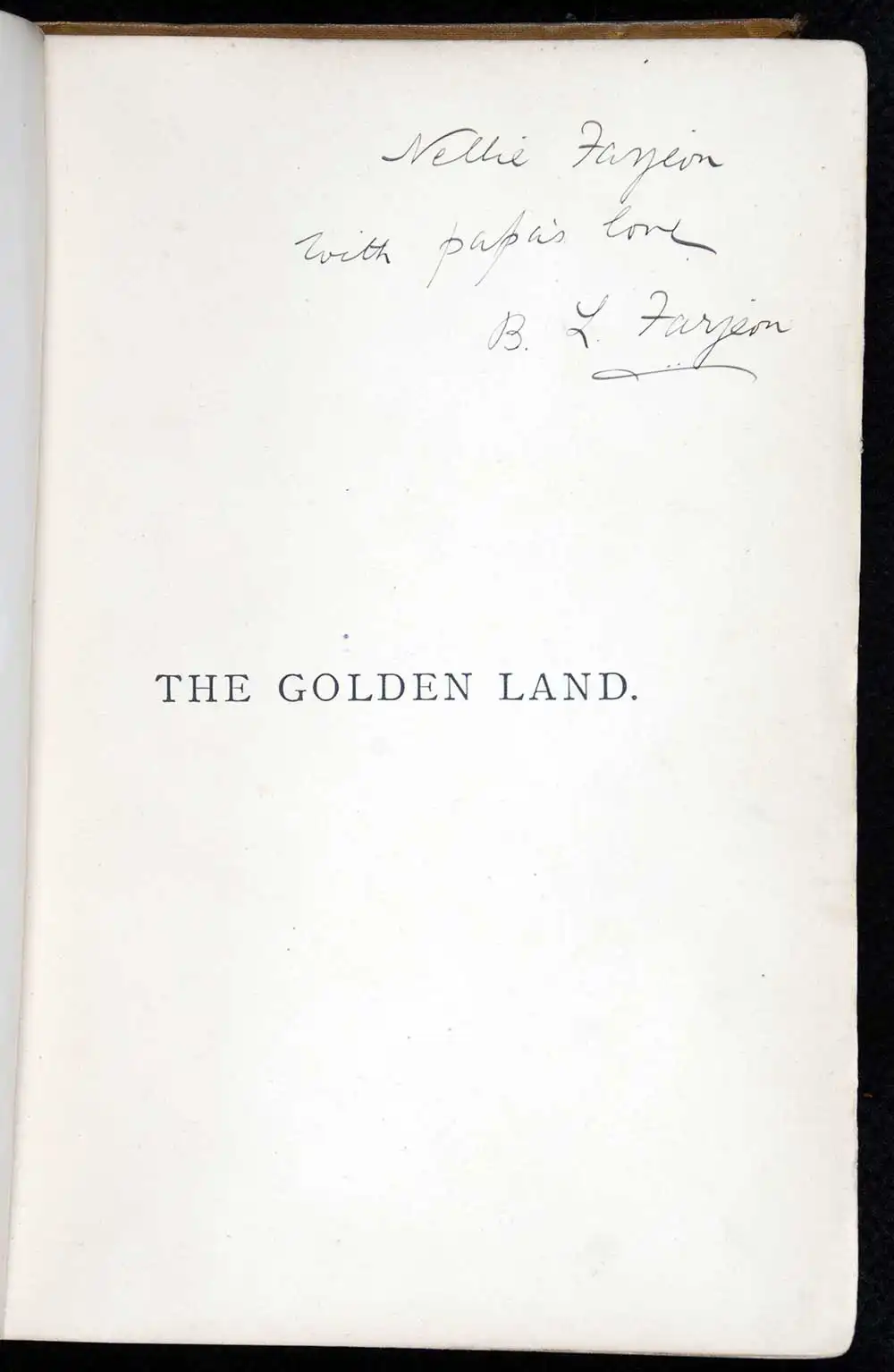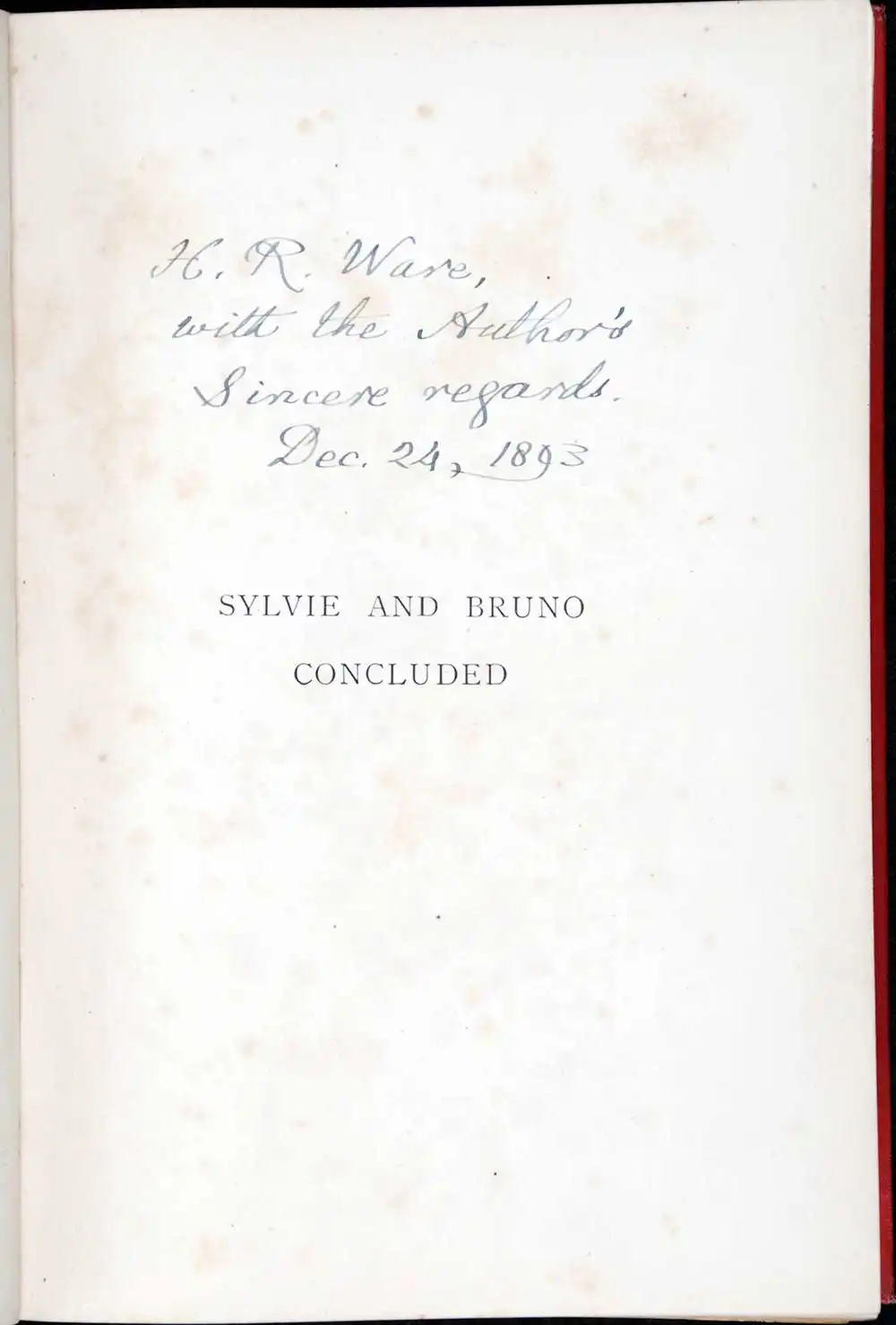Case 4
- Authors’ Presentation Inscriptions 2

Thomas Hardy. Far from the madding crowd. New and cheaper edition. London: Sampson Low, Marston and Co. Ltd., 1893.
The Reed
Collections copy of Far from the madding
crowd contains a presentation inscription by the English novelist Thomas
Hardy (1840-1928) to Florence Henniker.
Thomas
Hardy met the novelist Florence Henniker (1855-1923) in May 1893. She was the
daughter of Richard Monckton Milnes, Lord Houghton, and married to a
distinguished soldier. Hardy seems to have fallen in love with Henniker, who nevertheless
remained staunchly loyal to her husband. The novelists however remained
lifelong friends and collaborated on a short story ‘The spectre of the real’,
first published in 1894. Hardy’s letters to Henniker were published as One rare fair woman in 1972.

Thomas Hardy. Far from the madding crowd. New and cheaper edition. London: Sampson Low, Marston and Co. Ltd., 1893.
Open image in new window

B.L. Farjeon. The golden land, or, Links from shore to shore. London: Ward, Lock & Co., 1886.
A Reed
Collections copy of Benjamin Leopold Farjeon’s novel The golden land contains the author’s presentation inscription to
his daughter, the esteemed children’s writer Eleanor Farjeon. Benjamin named
three of the child characters in this novel after his own children Harry,
Eleanor and Joe (Herbert Farjeon was not born until 1887). The characters are
depicted as older children and this copy held a special place in the Farjeon
family nursery.
London-born
Benjamin (1838-1903) had come to New Zealand in 1861 where he became business
manager of the newly established Otago
Daily Times, before returning to London in 1867 to continue his career as a
popular novelist.
A.H.
Reed, had a lengthy correspondence with Eleanor Farjeon (1881-1965) during her
later years, and numerous letters to “Dear Alfred” are housed in the Reed
Collections. As an outcome of this correspondence, Eleanor donated an extensive
collection of Farjeon family works including books, manuscripts and portraits.

Lewis Carroll. Sylvie and Bruno concluded. London: Macmillan and Co., 1893.
Lewis
Carroll was the pen-name of Charles Lutwidge Dodgson (1832-1898), the English
writer most famous for his novels Alice’s
adventures in Wonderland (1865) and its sequel Through the looking-glass (1871).
Sylvie and Bruno, and its sequel Sylvie and Bruno concluded were two of
Carroll’s later novels. More lengthy and complicated than the ‘Alice’ stories,
these tales of fairy siblings had a didactic element which he had previously
eschewed.
Reed
Collections copies of both novels contain presentation inscriptions by Carroll
to H.R. Ware. The Reverend Henry R. Ware was a Guildford clergyman (born c.
1836) who became a friend to Carroll in his later years.


